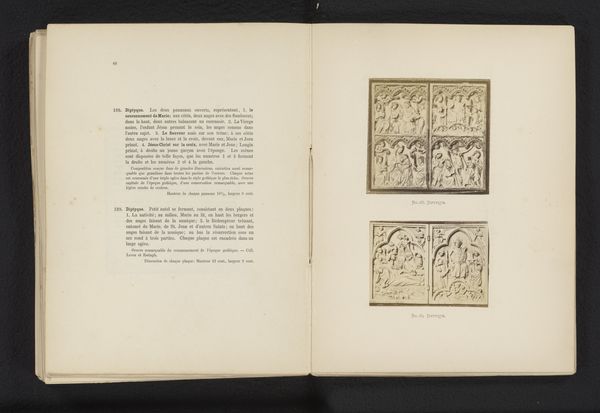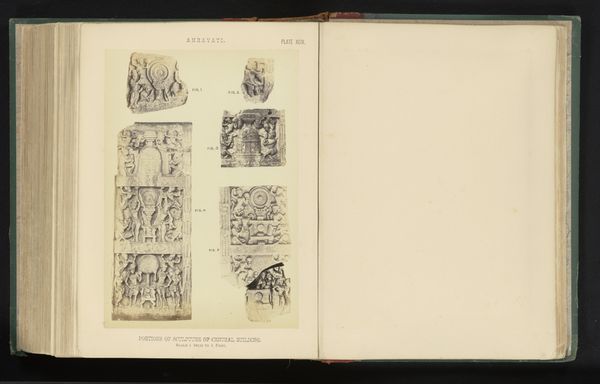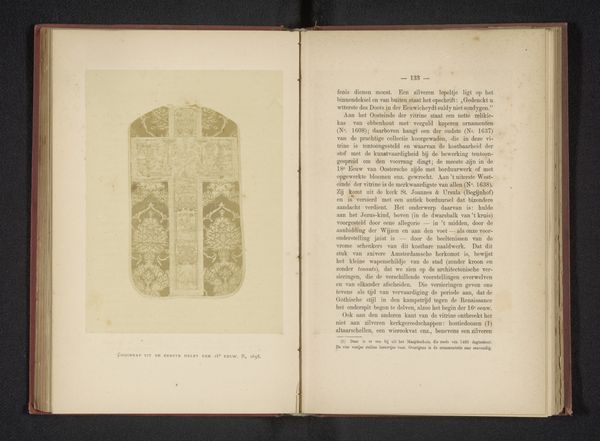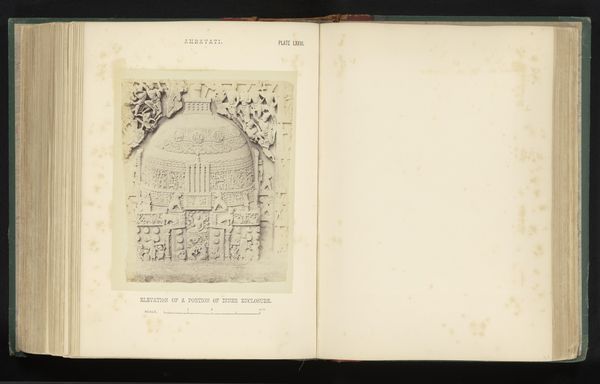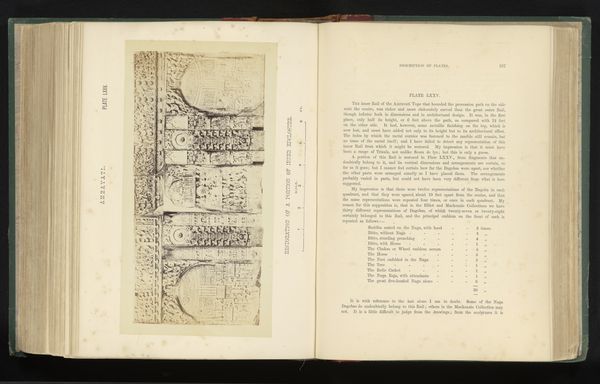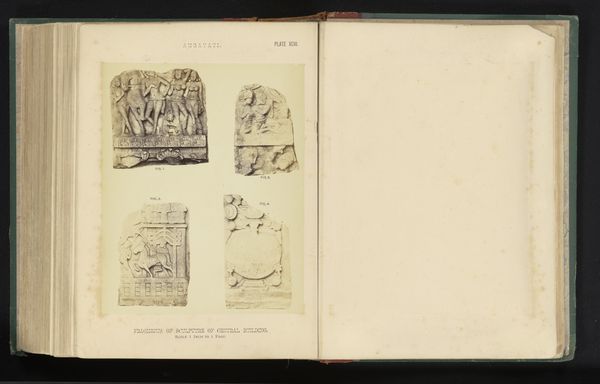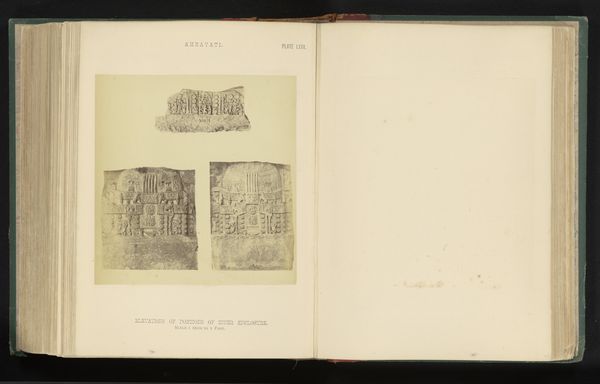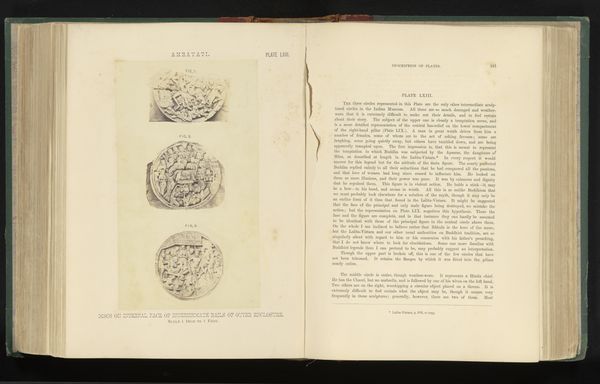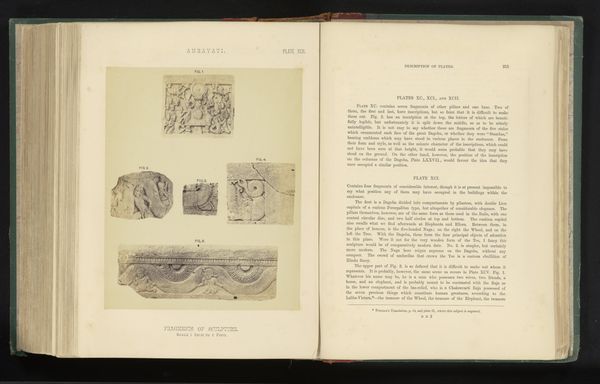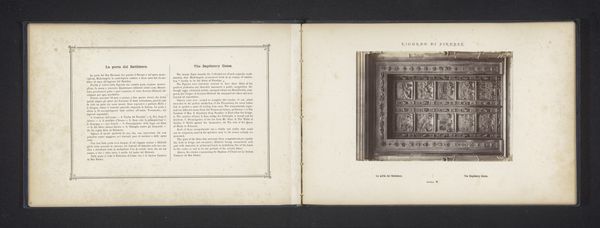
drawing, print, relief, paper
#
drawing
# print
#
asian-art
#
relief
#
paper
#
coloured pencil
#
ancient-mediterranean
Dimensions: height 261 mm, width 186 mm
Copyright: Rijks Museum: Open Domain
Curator: Before us, we have a print titled "Fragmenten van friezen," which translates to "Fragments of Friezes," created before 1868, attributed to William H. Griggs. The artwork presents a series of reliefs on paper, utilizing drawing and possibly coloured pencil techniques. My initial thought goes to how such imagery allows one to interpret ancient culture. Editor: My immediate impression is one of delicate yet stoic strength. The subtle lines and seemingly aged paper lend an aura of reverence. How interesting to consider this image in relationship to current socio-political dynamics surrounding coloniality and what gets classified as 'art' worthy of such detailed, painstaking preservation. Curator: That's a very poignant reading, and exactly the layers of intersectional discussion that should happen when considering ancient works and their place in contemporary society. The friezes themselves depict architectural and figural forms reminiscent of Asian art traditions, particularly relating to religious or commemorative contexts. The history surrounding their discovery and eventual documentation via prints speaks to a fascinating clash of cultures and power dynamics. Editor: Absolutely, it's the inherent politics of visibility that strikes me. Whose narrative is being amplified by the act of printing and archiving? Were these fragments initially meant for a broader public, or a more exclusive, possibly religiously affiliated viewership? Considering these works through a postcolonial lens opens a whole spectrum of vital questions. Curator: I'd also like to think about the practical reasons for prints and drawings like this one: the documentation and preservation for a public which would not be able to physically visit the site and/or a quick dissemination to a particular scholastic society to which it belonged. Editor: Agreed, and the artistic choices contribute to that public understanding. Griggs’ selection of which segments to reproduce—how each individual scene functions within larger philosophical or spiritual structures needs our awareness to question pre-existing ideas about the history and purpose behind these pieces. The careful application of line work highlights aspects he must have believed important, creating another layer of curatorial framing which further dictates modern perspectives. Curator: The friezes tell of a different, inaccessible past, re-told here in ink on paper and displayed, inviting us to question both their ancient origins and our own contemporary frameworks. Editor: A testament, truly, to how visual culture constantly transforms over time, revealing not only remnants of past lives but also present-day politics of interpretation and documentation.
Comments
No comments
Be the first to comment and join the conversation on the ultimate creative platform.


